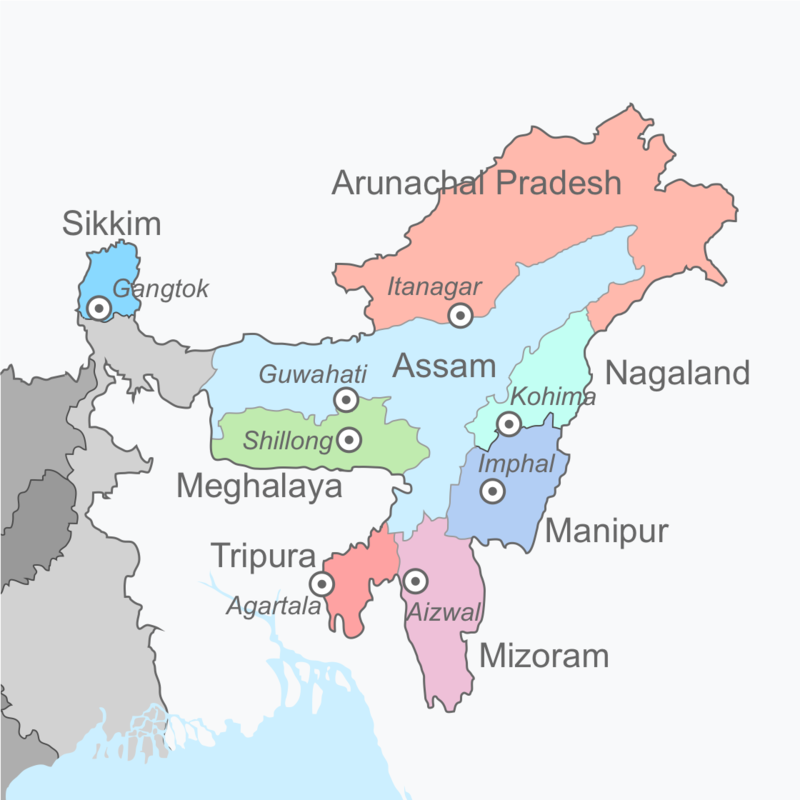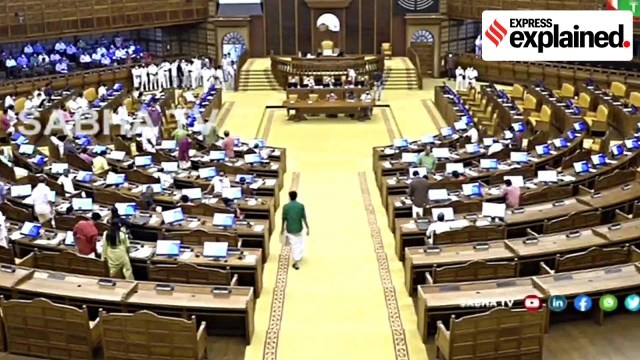Description

Copyright infringement not intended
Context - According to the report of the Ministry of Home Affairs, the National Socialist Council of Nagaland (NSCN-IM) was involved in 44% of insurgency-related incidents in Nagaland in 2020.
Key Points of the Report released by the Home Ministry
- The report highlighted that in 2020, Nagaland witnessed a 45% decline in the number of violent incidents compared to 2019, and no civilian and security forces deaths.
- Counter-insurgency operations led to the arrest of more than 200 insurgents and the recovery of 84 weapons in the State in 2020.
- The National Socialist Council of Nagaland (NSCN-IM) was involved in about 44% of the insurgency incidents in the State during 2020.
- The number of kidnapping/ abduction cases declined by 33% compared to 2019.
- In 2020, insurgency-related violence declined by 42% in Arunachal Pradesh, 12% in Assam, 23% in Manipur and 45% in Nagaland compare.
Nagaland Insurgency
- The British annexed Assam in 1826, and in 1881, the Naga Hills also became part of British India.
- The first sign of Naga opposition was seen in the formation of the Naga Club in 1918, which opposed the Simon Commission in 1929 and demanded autonomy for the area.
- In 1946, the Naga National Council (NNC) declared Nagaland an independent state on August 14, 1947.
- They were determined to establish a “sovereign Naga state” and they also conducted a “referendum” in 1951, in which “99%” population supported the demand for an “independent” Nagaland.
- They formed the underground Naga Federal Government (NFG) and the Naga Federal Army (NFA).
- The Government of India sent in the Army to crush the insurgency and, in 1958, enacted the Armed Forces (Special Powers) Act.
- The Naga Hills, a district of Assam, was upgraded to a state in 1963.
- In 1964, a Peace Mission was signed between the government and NNC to suspend the activities, but even after that the NNC continued to indulge in violence, and then Peace Mission was abandoned in 1967, and a massive counter-insurgency operation was launched.
- In 1975, a section of NNC leaders signed the Shillong Accord, under which they agreed to give up arms.
- Another group refused to accept the Shillong Accord and formed the National Socialist Council of Nagaland (NSCN) in 1980.
- With time, the NSCN became the “mother of all insurgencies” in the region.
- Their main demand is the creation of a “Greater Nagalim” that comprises “all bordering Naga-inhabited areas”, along with Nagaland.
- That included several districts of Assam, Arunachal and Manipur, as also a large tract of Myanmar.
- The map of “Greater Nagalim” has about 1,20,000 sq km, while the state of Nagaland consists of 16,527 sq km.
- The Nagaland Assembly has also advocated the ‘Greater Nagalim’ demand — “Integration of all Naga-inhabited bordering areas under one administrative umbrella”.
- In 1997, The Government of India signed a ceasefire agreement with NSCN.
Other Major Agreements of the Northeast
NLFT Tripura Agreement
- The agreement was signed on 10 August 2019 in the presence of the Home Minister.
- As per the MoU, for the overall development of the tribes of Tripura, the Government of Tripura will be provided with a Special Economic Development Package (SEDP) of Rs. 100 crores by the Government of India during a period of five years.
- Out of this amount of Rs. 100 crores, an amount of Rs. 40 crore has already been released to Tripura during the financial year 2020-21.
Bru Agreement
- A historic agreement was signed in the presence of the Home Minister on 16.01.2020 by the Government of India, Government of Tripura, and Government of Mizoram along with representatives of Bru migrants for the permanent settlement of 6959 Bru families in Tripura with a financial package of about Rs. 661 crore.
- As per the agreement, each resettled Bru family would be given financial assistance in the form of a fixed deposit of Rs.4 lakh, free ration, five thousand rupees per month for two years, housing assistance at the rate of Rs.1.5 lakh, and a land plot of 30x40 square feet.
Bodo Peace Accord
- In the presence of Home Minister Shri Amit Shah, a Memorandum of Understanding (MoU) was signed on 27.01.2020 by the Government of India, the Government of Assam, and representatives of Bodo groups to resolve the long-pending Bodo issue.
- Most of the demands of the Bodo groups have been met and the remaining demands would be met when as per the MoU, the committees constituted for this purpose would give their recommendations.
- As per the agreement, a special development package of Rs 1,500 crore (750 crores by the Central Government and 750 crores by the Assam government) will be provided over a period of three years for the all-around development of the Bodo region in Assam.
Karbi Anglong Agreement
- To end the decades-old crisis in the Karbi Anglong region of Assam, a Memorandum of Understanding (MoU) was signed on 04.09.2021 in the presence of the Home Minister between the Government of India, the Government of Assam and representatives of Karbi groups.
- As a result of this historic agreement, more than 1000 armed cadres renounced violence and joined the mainstream of society.
- As per the agreement, a special development package of Rs 1,000 crore will be given over five years by the central government and the Assam government to take up special development projects in the Karbi areas.
- This agreement will ensure the protection of the culture, identity, language, etc. of the Karbi people and the all-round development of the region.
https://epaper.thehindu.com/Home/ShareArticle?OrgId=G389P7REO.1&imageview=0










